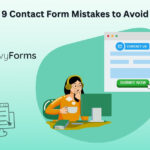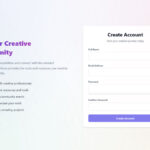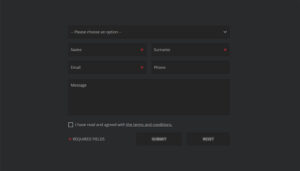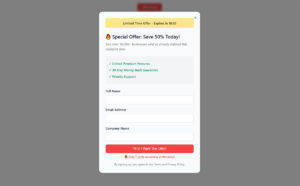Your website visitors want to reach you. Without a form, they can’t. Understanding what WordPress forms are and why they matter changes how you approach visitor communication, lead capture, and…
Table of Contents
In a sea of similar businesses and an overwhelming amount of online information, grabbing attention and connecting with your audience can feel like an uphill battle. So, how do you ensure that the people who visit your website, read your blog, or check out your products actually stay engaged with you long-term?
The answer is simpler than you might think: a subscription form.
You’ve likely seen them before: the small, unobtrusive pop-up asking for your email, the form tucked in a website’s footer, or the box inviting you to be the first to know the latest updates.
But what makes these forms so essential? Why do businesses, bloggers, and content creators obsess over them? The answer is simple: they work—but only if you know how to use them effectively.
What is a Subscription Form?
To start with the basics, a subscription form is a tool that allows website visitors, customers, or potential leads to voluntarily share their information. In exchange for this information (which usually includes a name and an email address), users typically receive something valuable, such as a discount code, special offer, or exclusive content.
At its simplest, a subscription form acts as a gateway between your audience and the content or information you want to share with them. Additionally, these forms can be used to sign up for a membership, an account, or a service.
In general, what sets subscription forms apart from other ways of reaching your audience, like social media or search ads, is that they offer a more personal, direct connection. When someone subscribes, they opt-in to receive some content from you, making it easier to engage and build a relationship over time.
In a nutshell, a subscription form is an invitation to engage. It offers your audience a convenient way to stay informed and gives you the opportunity to nurture long-term, meaningful relationships.
When to Use a Subscription Form
Knowing when to use a subscription form is extremely important if you want to capitalize on this powerful tool. Strategic use ensures that you’re capturing the right audience and making the most out of your efforts. On the other hand, placing a subscription form in the wrong context or at the wrong time can lead to low conversion rates, frustrated users, and missed opportunities.
To make sure you are using them at the right moments, keep in mind your marketing objectives and your audience’s needs. Here are some key situations when a subscription form can deliver maximum value:
1. Building an email list
One of the most common reasons business owners create a subscription form is to build an email list. These lists are then used to share various content, updates, news, etc., directly with clients.
Regardless if you are just starting your business, launching a blog or trying to grow your brand, having this direct line with your customers is always a big plus. An email list allows you to communicate with people who have already shown interest in your brand, making it much easier to nurture relationships and drive conversions.
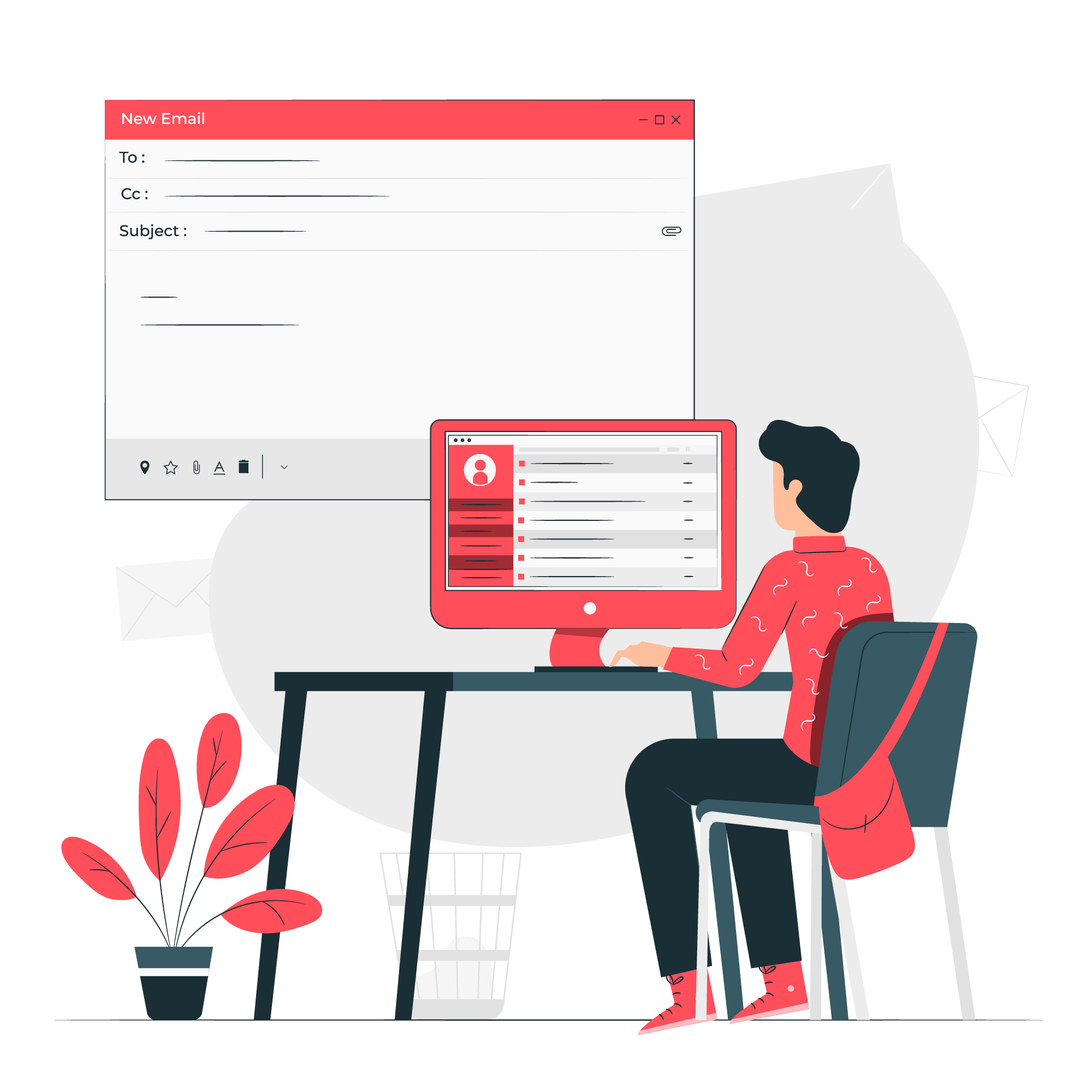
2. Sharing valuable content or updates
The best thing about subscription forms is that they don’t ask for much information, so people rarely hesitate to fill them out. But, providing some additional content, such as guides or industry insides, can make them even more likely to leave their email addresses.
As for you, all these contents will give you an opportunity to offer something valuable to your audience while warming them up to your products or services. This kind of marketing is all about forming the right relationships with your clients, and it’ll take some time, but soon, you’ll be able to freely share all the latest news, updates, and info with an audience excited to hear it.
3. Announcing new products, services, or features
When you’re launching a new product, feature, or service, you want to ensure your most engaged audience is the first to know. A subscription form can be the perfect tool to notify your subscribers when something new is available, driving excitement and anticipation.
Keep in mind that the audience that has already expressed interest is the best one to pitch your product and services to further.
4. Offering incentives and promotions
If you have a special offer, discount, or promotion, a subscription form can be a great way to incentivize users to sign up. This doesn’t have to break the bank or put your business in jeopardy, but rather to be something extra you are offering for those who are willing to sign up.
Offering something of value, like a limited-time discount or free resource, in exchange for a subscription encourages people to act quickly and can help build your email list faster.
5. Improving customer retention
Lastly, a subscription form can also be a tool for ongoing engagement, helping you maintain regular communication with your audience. Use different incentives that are known to boost client retention, like loyalty points or early access to products or services. These rewards make your subscribers feel valued and appreciated, motivating them to continue engaging with your brand.
Remember, customer retention is not just about keeping people subscribed; it’s about providing consistent value and creating a sense of belonging within your community. Be sure that even after the abundance of emails is collected and lists are formed; you don’t take your subscribers for granted and keep regular, meaningful communication.
Different Types of Subscription Forms
With so many different uses, it’s no surprise that there are various types of subscription forms. Each is designed for a specific context and marketing goals. Depending on your objectives and your website’s overall design, try utilizing one of these types:
Pop-up subscription forms
Pop-up forms are one of the most widely used types of subscription forms. They overlay on top of the current webpage, usually after a set amount of time. While they are a bit intrusive, they are highly effective in capturing attention, especially when timed correctly.
Best for: E-commerce sites, special promotions, or when you want to offer a limited-time incentive to encourage sign-ups.
Slide-in forms
Slide-in forms are similar to pop-up forms, but they are far less intrusive. They “slide in” from the side of the screen, typically after a user has been on the site for a while or scrolled a bit down the page. They don’t cover the entire screen, allowing users to continue browsing without interruption.
Best for: Sites that want to gently encourage users to subscribe without completely interrupting their browsing experience.
Footer subscription forms
These forms are placed at the bottom of a webpage, often in the footer area. They are not intrusive at all, but they can lead to lower conversion rates as they are not so “in your face.”
Best for: Websites that want a simple, easy-to-find subscription option without disturbing the main content or user experience.
Exit-intent forms
Exit-intent forms are designed to appear when the user’s mouse movement suggests they’re about to leave the site. This is usually when they move toward the browser’s address bar or close button. They are often referred to as a last-ditch effort to capture email addresses before the user leaves. So, offering an incentive like a discount or free resource is a great way to grab people’s attention.
Best for: E-commerce sites or landing pages that want to recover potential leads just before they leave.
Content upgrade forms
Content upgrade forms are often used in conjunction with specific pieces of content, such as blog posts, guides, or eBooks. These forms offer additional, high-value content in exchange for an email subscription. For example, a blog post may offer a free checklist or template to download if the reader subscribes to your newsletter.
Best for: Blogs, educational websites, or content marketers who want to offer extra value in exchange for sign-ups.
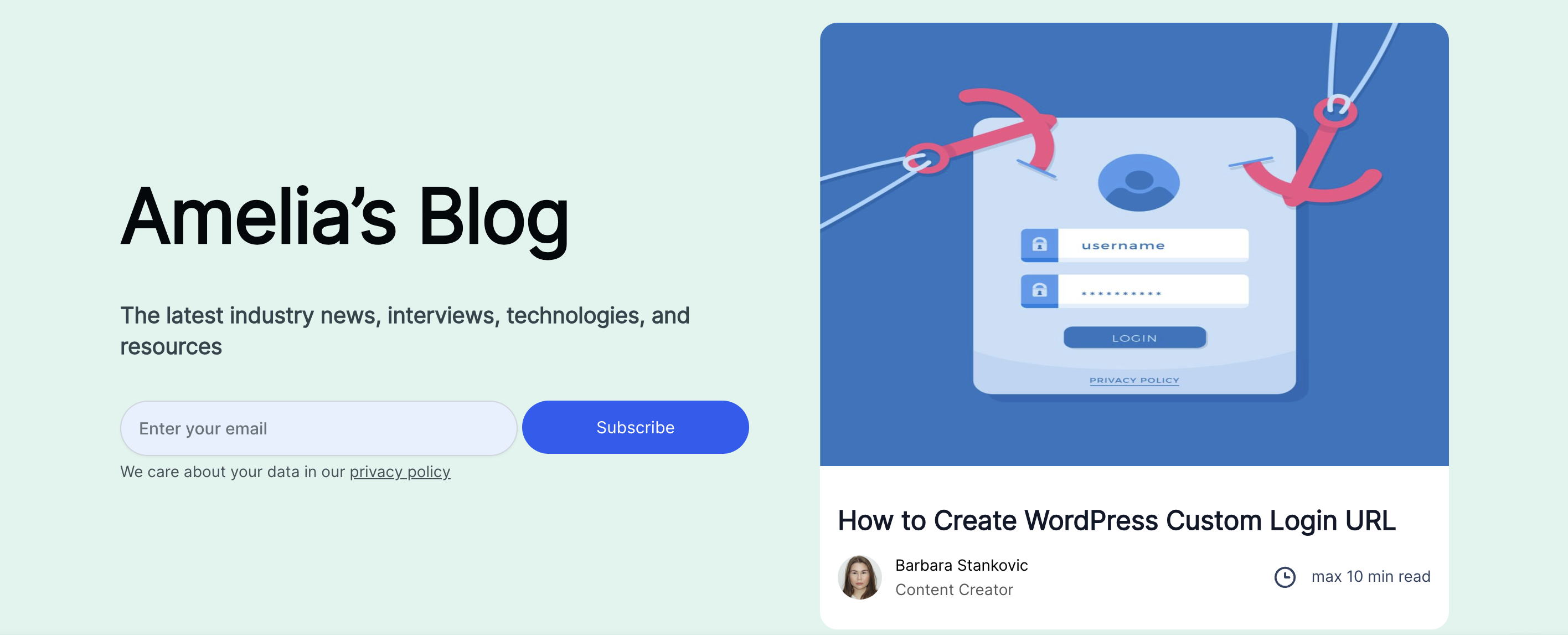
Welcome mats (full-screen forms)
Full-screen forms are those that cover the entire page when a visitor lands on your website. Their advantage is that they have immediate visibility, unlike some other types. Welcome mats often offer an incentive, such as a discount or freebie, in exchange for signing up.
Best for: Websites with a lot of new visitors daily or for those who want to grow their email list quickly.
Inline subscription forms
Inline subscription forms are embedded directly into the content of a webpage, typically at the top, bottom, or side of a page. They are unobtrusive and blend seamlessly with the design of your site. They allow users to subscribe without interrupting their browsing experience. Commonly found on blogs and product pages, inline forms can capture attention without being too aggressive.
Best for: Content-heavy sites, blogs, or landing pages where you want to maintain a smooth user experience while collecting email addresses.
How to Properly Use a Subscription Form
Creating a subscription form is just the first step; how you use it is what ultimately determines its effectiveness. We already mentioned that a well-designed and strategically placed subscription form can help you engage your audience and boost conversions. But to get the most out of your forms, there are several best practices you can easily implement to drive better results.
Offer clear value in exchange for information
The first rule of a successful subscription form is to provide clear value in exchange for the visitor’s information. No one wants to give you their email information and get absolutely nothing in return.
Ensure you highlight exactly what they’ll receive once they subscribe, whether it’s a discount, exclusive content, industry insights, or free resources. The more valuable the offer, the more likely visitors will be to opt in.
Pro tip: Be specific about what subscribers can expect. For example, “Get 10% off your first purchase” is much more compelling than just “Subscribe to our newsletter.”
Keep your form simple and user-friendly
When it comes to subscription forms, less is always more. Keep the form fields to a minimum – name and email address are usually enough. In fact, reducing standard forms from 11 to four fields increased conversions by 120%. The simpler your form, the less friction there is for visitors to fill it out. With the subscription form, your main objective is to generate an email list for further communication, so there is no point in asking too many questions either way.
Also, ensure your form is mobile-friendly. A growing number of people access websites via mobile devices, and if your subscription form isn’t optimized for mobile, you could lose valuable leads.
Create clear call-to-action
The call-to-action (CTA) is arguably the most important part of your subscription form. It’s the button users click to submit their information, and it should be clear, compelling, and action-oriented. Phrases like “Join Now,” “Get Started,” or “Sign Up for Free” work well because they encourage immediate action.
Make sure the CTA stands out visually by using contrasting colors and clear, concise wording. A strong CTA will help your visitors understand what to do next.
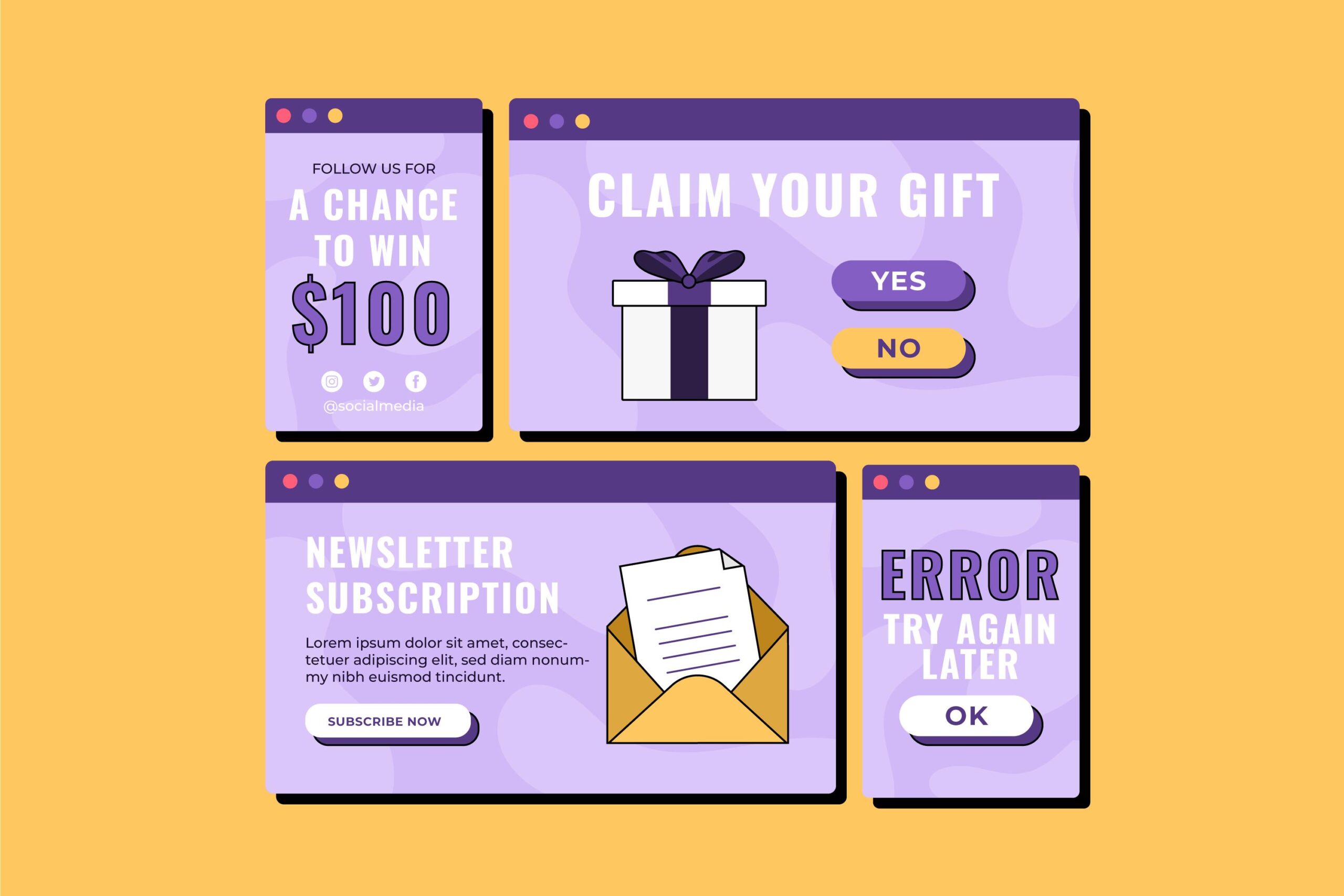
Use attention-grabbing design
While you don’t have to opt for intrusive subscription forms like pop-ups or full-screen ones, you still need to make sure your forms grab people’s attention. After all, if visitors don’t see the form or understand its value, they’re unlikely to engage with it.
A subscription form can still fit your website design and grab attention; you just need to take some time to design it properly. For instance, you can use contrasting colors to make the form stand out while still aligning with your site’s aesthetic.
Be sure to use bright, bold colors and concise language that instantly communicates the benefit to the visitor, encouraging them to take action. Lastly, consider the visual hierarchy of your form. Your CTA button should stand out clearly, using larger text or a different color to make it obvious where the visitor should click.
Conclusion
In an online world where distractions are endless, every opportunity to connect with your audience should be fully leveraged. A subscription form offers a simple yet powerful way to build lasting relationships with your visitors and create an ongoing communication channel. But its true power lies in knowing when, where, and how to use it effectively.
The key to success lies not just in collecting email addresses but in fostering relationships based on trust and value. When used to their full potential, they can be far more than a marketing tool; they can become a bridge that connects your brand with the people who can truly benefit from it, turning casual visitors into engaged, loyal subscribers.



